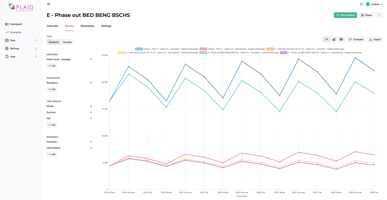Just as strategic enrollment management looks at metrics at the institutional, department, program,...

As data grows in size and complexity, especially with the rise of Artificial Intelligence, data governance has become crucial across all sectors, including higher education. The rapid changes in technology, regulatory pressures, and shifting demographics are driving the need for reliable, trustworthy, and secure data to support informed decision-making. Data governance provides the framework to manage data effectively, ensuring it aligns with organizational goals and compliance requirements.
Despite its importance, data governance is often misunderstood as solely an IT responsibility. Our workshops aim to dispel this notion, helping participants see data as a valuable business asset. Attendees will learn how data governance transforms raw data into actionable organizational knowledge, making it accessible and meaningful for everyone on campus.
Establish a shared common language to talk about data and data governance. The workshop will provide participants with little experience with data systems, data theory and technology, or data governance, the background knowledge to engage thoughtfully in data governance development, strategy, and implementation discussions. This workshop will introduce some data literacy basics.
Establish the scope of data governance in a large multi-system organization. Understand why data governance is needed, the key components of a data governance framework and the roles and responsibilities of the individual, unit, and leadership in data governance and data management across an organization. Have a basic understanding of the relationship between data governance policy and processes, and basic data stewardship practices.
Establish what features make data useful for strategic decision-making and integrating your organizational data language into data quality management practices, reporting, and accountability. Learn strategies for data quality management and data integration to address common challenges experienced in large multi-system organizations. Learn the basics of metadata management and data lifecycle management.
Establish how data security fits in with data governance. Describe risks, challenges, and strategies unique to the organizations sector, including response management and the role of the communication office to managing stakeholder concerns in the case of an incident.

If you're ready to scale up your data governance efforts to include data definitions, lineage, and roles, consider Plaid Govern—a cloud-based metadata management platform designed for higher education. Plaid Govern centralizes data definitions, makes data lineage transparent, and simplifies impact analysis, ensuring your institution can navigate data governance confidently
Several data sources can be integrated directly using the visual interface. Additional data sources are available through the command line interface.
We'd love to chat about your data governance goals and see how we can support your success.
Check out some of our recent blog posts focused on data governance

Just as strategic enrollment management looks at metrics at the institutional, department, program,...

Program closure is never an easy decision. While academic curricula evolve over time, it's rare for...

As we approach 2025, Canadian post-secondary institutions face an unprecedented period of...
Plaid Govern delivers same-day deployment, providing faster and more scalable metadata management through an easy-to-use cloud-based platform offering centralized collaboration and governance functionality.
Plaid Govern assists with reducing costs by generating automated data ingestion and documentation, saving time. Plaid’s Data Governance also reduces risk by reducing dependency on key staff and enabling the ability to implement data governance roles and user access. Accurate documentation and understanding of lineage provides greater clarity around data, lineage, ownership, and usage of data across campus systems.
Plaid offers Govern as a managed service - meaning we take care of hosting, upgrades, security, sign on, and ensuring you can connect to your data systems. Our tool is based on the open source DataHub, which project provides a standard Apache license, the terms of which are incorporated into your service agreement with Plaid upon subscription.
Plaid takes care of ensuring single-sign-on, updates, security, and hosting. Additionally, Plaid has experience in developing custom scripts and integrations for platforms not yet made available in the open source world. Plaid has also designed custom features built exclusively for our higher education customers.
We take data privacy seriously.
Our guiding principles: